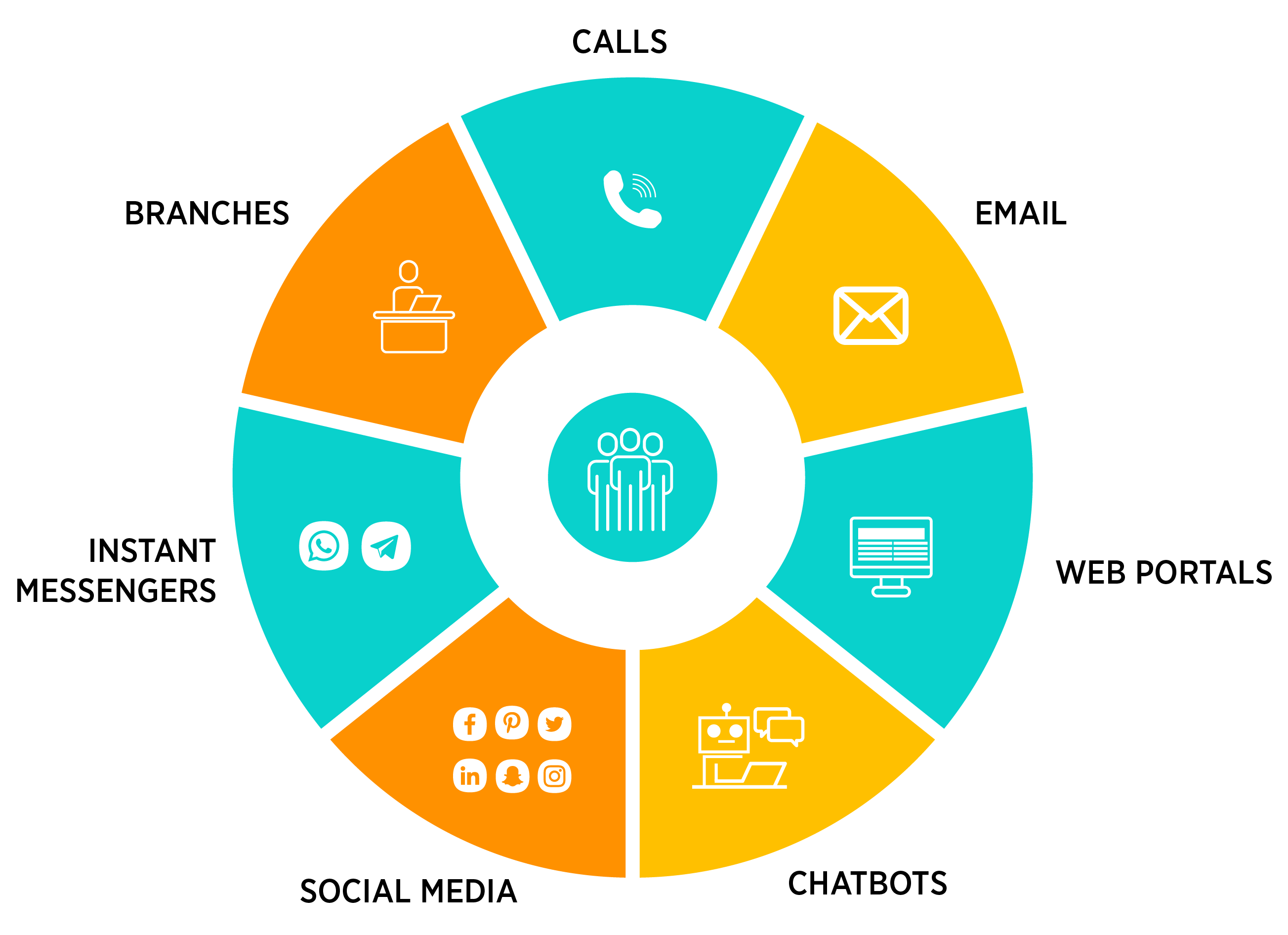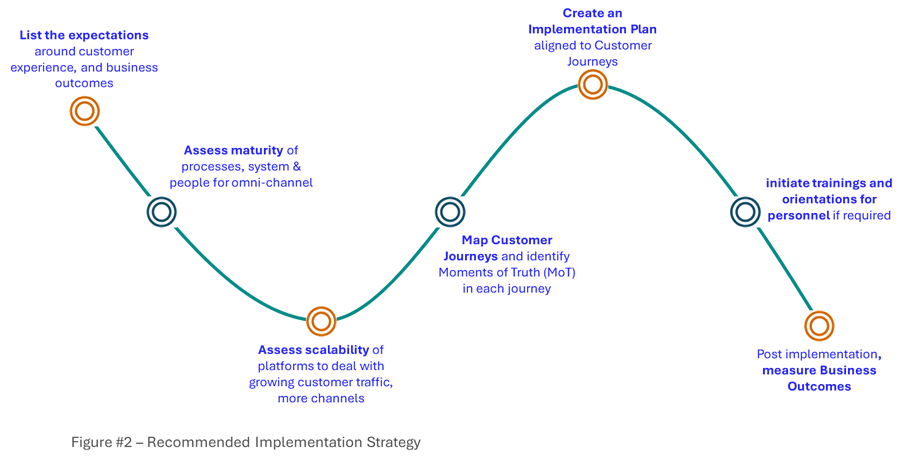- Home
- /
- Insights
- /
- Latest Thinking
- /
- The Omni-Channel Servicing Organization of the Future
Latest Thinking
The Omni-Channel Servicing Organization of the Future

The customer at the centre of your Business. No silos between channels. Conversations are seamless, resolutions are faster. Providers are happy, CSRs are happier, customers are happiest.
Would you like to know more?
Post the Covid 19 pandemic, more customers are using digital channels, more than ever, and surveys suggest that they will continue to do so even in the future. Hence, the most critical challenge facing servicing organizations is to ensure the customer experience is consistent across any channel that the customer chooses to connect on. Providers also need to ensure that the context of the conversation is not lost even if customers switch from one channel to another, and even if there is a time lag between these interactions. The servicing industry is at an inflection point where the current environment necessitates a transition from a traditional multi-channel approach to a more inter-connected “omni-channel” approach.
At Maantic, we are assisting our clients to navigate the transition from multi-channel to an omni-channel solution using our domain expertise, and our strength and experience with BPM platforms.
Customer Servicing at an inflection point post-pandemic
Customer’s use of digital channels for almost every need is growing at an alarming pace, and that only accelerated when governments all over the world induced restrictions on travel, physical branches, shops, etc. Since the start of the pandemic induced restrictions, most customers who adopted digital channels for the first time, have continued to use them even after the restrictions were lifted. What started as ad-hoc or urgently developed solutions to deal with the online surge of customer traffic has now become mainstream. However, this radical change in consumer behavior has also come with its own challenges for providers and marketers to make their digital platforms robust, and convenient for customers of any age to use while embracing newer channels as they get embedded into the sales and servicing ecosystem.
How the proliferation of new communication channels and service industry innovations has increased customer expectations from traditional industries
A trend seen in recent times is that customers now expect the same standards of service – be it an online buying exercise, or of resolution of queries with the contact centre, or even complaints. For example, if a quick-service app promises delivery of groceries in 15 minutes of placing the order, then the customer expects that any service request placed with, say a bank or insurance company should also be resolved within a similar timeline. Another trend is the proliferation of public forums and social media channels for almost every product or service possible where customers can post their experience and/or recommendations online. This has prompted service organizations to raise their game in terms of customer satisfaction lest they get bad press on one of these forums, and these days just one unhappy customer is enough to reduce their rating.
Gradual progression of CRM to multi-channel servicing (still not omni-channel)
As customers started adopting newer channels of communications in addition to the regular calling and SMS, it became imperative for service providers to be available on whichever channel their customer was. This resulted in business logic built separately for each channel as required which eventually became the Multi-Channel Servicing Ecosystem, wherein customers could get their service requests completed through, say a web portal, or by sending an email, and lately even via instant messengers. However, even with this evolution, each channel and the conversations existed in their own silos. So, say a customer tried to do an address change on the self-service portal, and got stuck at a point, and then called Customer Care to ask for help, chances are the CSR who received the call has no clue what the customer needed help on. This was the major disadvantage of this model of servicing and would lead to customers repeating themselves thus losing valuable time. Add to that the frustration of repeating everything from the start if the call got disconnected in between.
The challenges in the multi-channel solution presented a real need to dissolve the silos between the channels so that the context of the conversation is retained even if the channel changed any number of times during the interaction. Imagine how this would transform the customer experience as well as save valuable time for both customers and CSRs.
Evolution of multichannel into omni channel – logic not built in channels but at a centralized location
Unlike multi-channel, the business logic is not required to be built for each channel; rather it sits outside the channels, most often at a centralized location some platforms choose to call “the brain” which is connected to all channels. Even when newer channels are introduced, the brain can be configured to connect to the new channel and leverage the inherent business logic. What this means in terms of business outcomes is that customers no longer must repeat their words and/or actions when they switch from one channel to another in the middle of a journey, and the business context is retained till the transaction is completed.
Business Outcomes that a true omni-channel solution delivers:

Risks of not adopting an omni-channel strategy
- The most critical and real risk is losing your customers. Once a customer has had a bad experience with service, chances are they will surely start looking for alternatives.
- With the proliferation of social media channels and websites, even one bad review by a frustrated customer can result in significant loss of brand value and reputation which can then cascade further into reduced sales, and sometimes even loyal customers wanting to switch to another provider.
CSRs in the new omni-channel ecosystem
Although we speak of omni-channel as a digital transformation tool, there is still a human element required in this proposition, and the role of CSRs is not going away any time soon, since chatbots may not be mature enough to solve all possible queries, customers would still want to talk to someone at the provider. A chatbot can transfer the conversation in real time to the CSR. Alternatively, customers may ask the chatbot to connect to a real person.
Industry Examples of omni-channel
At a large online supermarket in India, customers can conduct purchases on the web portal, or mobile app. All items added to the cart are synced in real-time, so even if the customer switches from web to the mobile app or vice versa, the cart is always up to date on both channels. Also, for any queries, change in orders, payment issues, etc., if customer calls Customer Service, their cart, transactions, etc. are visible to the Customer Service Representative in real time.
Our recommended strategy for implementing omni-channel servicing

Our experience in implementing omni-channel Customer Servicing
For a large manufacturing client in Europe, Maantic re-imagined the Customer Service Experience. We implemented an intelligent Email Bot that triages all incoming email, uses AI and Natural Language Processing to understand the customer context, and assign the request to the right customer servicing team. This resulted in a 40% increase in processing efficiency, eliminated manual tasks of triaging emails, and significantly reduced processing costs. We also implemented the self-service channel for customers which was integrated with the contact centre, so customers could get their requests resolved via the portal, and also could call the contact centre if they got stuck at any point, and the CSR would have the full context of the transaction to continue the journey further without the customer having to repeat themselves.
For a large North American life insurer, Maantic is transforming the inbound calling experience by implementing Pega Customer Service for Insurance which will enable their agents to register claims as well as provide real time status of ongoing claims to calling customers. In future releases, the vision is to integrate more channels viz. customer self-service portal, chatbots and social media messaging services, all existing in an omni-channel setup.
Write to us at info@maantic.com for going true omnichannel.
By
Narendra Shenoy
How can we help you?
Similar:
Know More
Questions? Want To Know More.
To know more about how Maantic has delivered digital transformation solutions, reach out to our Solar Energy digital transformation expert.







